|
|
| |
|
COLLECTING 007 – American Cinematographer magazine
WRITTEN &
COMPILED BY KEVIN HARPER |
|
|
American
Cinematographer is a magazine published monthly by the American
Society of Cinematographers. It focuses on the art and craft of
cinematography. The emphasis is on interviews with cinematographers, but
directors and other filmmakers are also often featured. Articles
include technical how-to pieces, discussions of tools and technologies
that affect cinematography, and historical features. The American
Society of Cinematographers was founded in Hollywood in 1919 with the
purpose of advancing the art and science of cinematography and bringing
cinematographers together to exchange ideas, discuss techniques and
promote the motion picture as an art form - a mission that continues
today. The ASC began publishing American Cinematographer on
November 1, 1920, as a twice-monthly four-page newsletter about the
society and its members. From March 1922 it became a monthly magazine.
American Cinematographer has been published every month since then,
and is an award-winning international publication covering the technology
and artistry of visual storytelling, and now offers both printed and
digital editions.
In-depth articles on the
making of the James Bond films have appeared in American
Cinematographer on thirteen occasions since 1970, with only The Spy
Who Loved Me (1977), Moonraker (1979) and The World Is Not
Enough (1999) not being featured on
the cover. As a specialist publication American Cinematographer has
featured interviews and profiles with the majority of James Bond film cinematographers. American Cinematographer often publishes unique
behind-the-scenes photographs that were not seen anywhere else.
|
|
On Her Majesty’s Secret Service: Filming the Thrills, Chills and
Spills of 007
How the second unit staged and photographed spectacular action
sequences for OHMSS by John Glen |
|
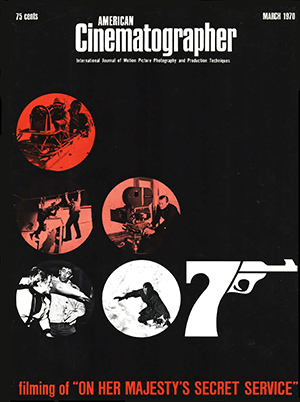 |
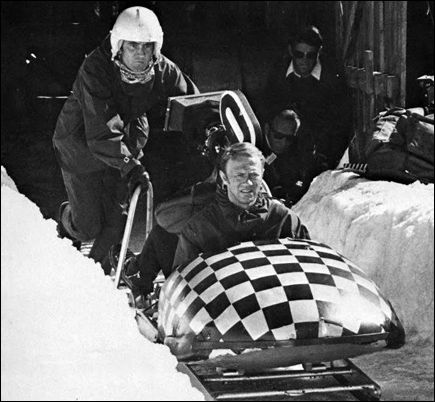 |
|
American
Cinematographer March 1970
On Her Majesty's Secret Service
Director of photography
Michael Reed, BSC |
|
Stuntman Heinz
Leu drives bobsled, as second-unit cameraman Alex Barbey,
sitting back-to-back with him in the tiny vehicle, trains the
hand-held camera on George Lazenby for push-off of hair-raising
chase down the icy run. Leu doubled in long shots of this
sequence for Lazenby, who did closer shots against a
front-projection screen. |
|
|
|
Behind the Scenes of The Spy Who Loved Me — Plus Pinewood’s 007
Stage
An interview with production designer Ken Adam and director of
photography Claude Renoir |
|
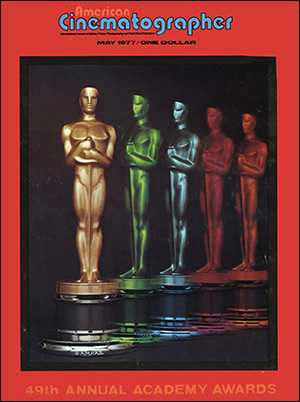 |
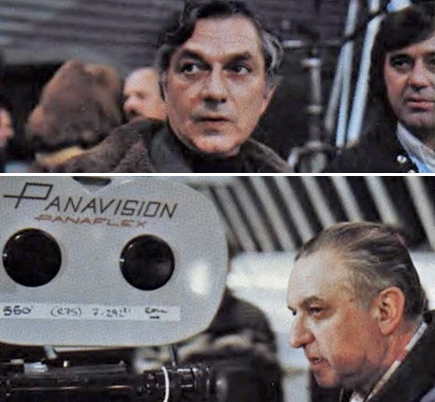 |
|
American
Cinematographer May 1977
The Spy Who Loved Me
Director of photography
Claude Renoir |
|
Key technicians
on The Spy Who Loved Me include [top] production designer
Ken Adam, who set the style for the Bond series with Dr. No
(1962). [bottom] Director of photography Claude Renoir,
grandson of the great Impressionist painter Auguste Renoir, and
nephew of director Jean Renoir. |
|
|
|
The
Freefall Filmmaking of Moonraker
In an effort to create the most spectacular opening sequence
for the latest James Bond film,
skydiving daredevils take to the air - an article by Moonraker
aerial photographer Rande DeLuca. |
|
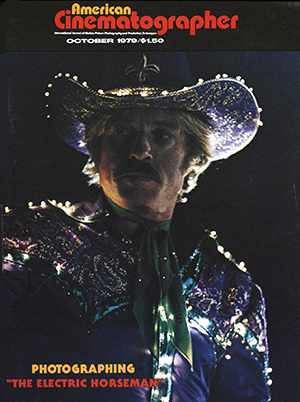 |
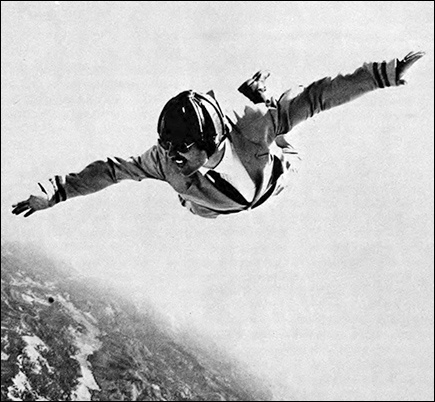 |
|
American
Cinematographer October 1979
Moonraker
Director of photography
Jean Tournier |
|
Former Captain
of the United States Parachute Team, B. J. Worth models the
latest in pilot’s apparel as he freefalls through the air after
007 has wrestled his parachute from him. The specially designed
suits contain both main and reserve parachutes and were
reinforced to withstand freefall flights and landings. |
|
(Photo by
Peter Boettgenbach) |
|
|
|
Photographing For Your Eyes Only
For the August 1981 issue of AC, some of those responsible for
the filming and production - including
Alan Hume, John Glen, Willy Bogner, Paul Wilson and Jimmy Devis - shared their experiences. |
|
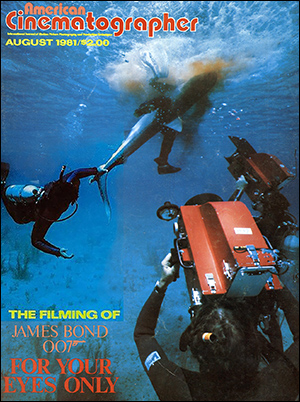 |
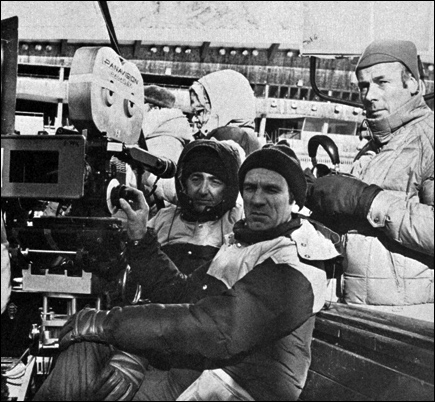 |
|
American
Cinematographer August 1981
For Your Eyes Only
Director of photography
Alan Hume, BSC |
|
Camera operator
Alec Mills (left) and focus puller Mike Frith. “The camera operator is
probably one of the most underrated technicians in our
business,” says John Glen (right). “During the shooting, he is probably
closer to the director than anyone.” |
|
|
|
Underwater for Never Say Never Again
A 12-page feature on the underwater filming |
|
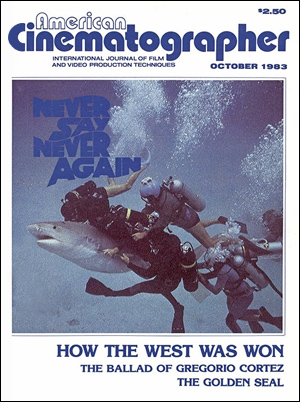 |
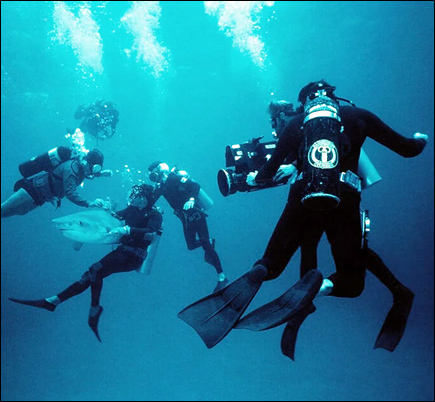 |
|
American
Cinematographer October 1983
Never Say Never Again
Director of photography
Douglas Slocombe, BSC, ASC, GBCT |
|
Shark wrangling
in The Bahamas. The underwater sequences in Never Say Never
Again (1983) were directed by
Ricou Browning. The underwater director of photography was
Bob Steadman, with underwater camera operators Jordan Klein and
Mike Ferris. |
|
|
|
New
Bond Fills Bill in The Living Daylights
It’s a joint effort as several franchise vets re-team to
introduce the world to a new 007 |
|
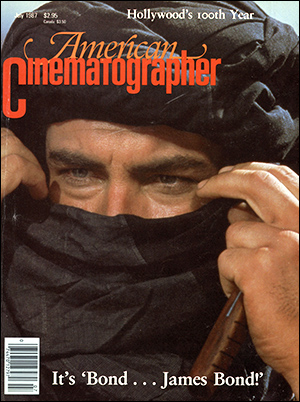 |
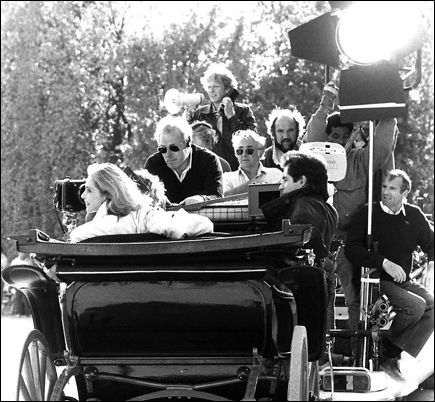 |
|
American
Cinematographer July 1987
The Living Daylights
Director of photography
Alec Mills, BSC |
|
Director of
photography Alec Mills (centre wearing sunglasses) seated behind
The Living Daylights director John Glen (centre left in
sunglasses) as they film James Bond (Timothy Dalton) and Kara
Milovy (Maryam d'Abo) making their arrival in Vienna. |
|
|
|
Licence To Kill — No. 16 and Counting
Cinematographer Alec Mills, BSC returns to the 007 franchise
for yet another mission behind the camera. |
|
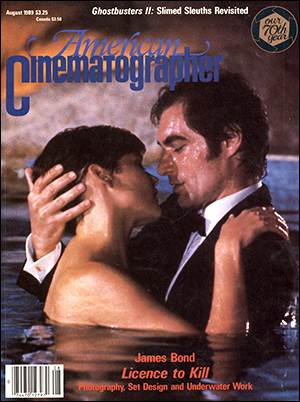 |
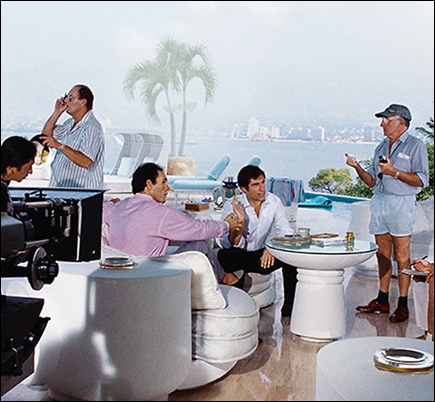 |
|
American
Cinematographer August 1989
Licence To Kill
Director of photography
Alec Mills, BSC |
|
Acapulco,
Mexico 1989: (L-R) clapper boy Simon Mills, gaffer John Tithe,
actors Robert Davi (as Franz Sanchez) and Timothy Dalton (as
James Bond) [seated], and director of photography Alec Mills.
Licence To Kill was the first James Bond film not based at
Pinewood Studios since Moonraker (1979). |
|
|
|
GoldenEye: Reintroducing Bond... James Bond
Director Martin Campbell and cinematographer Phil Méheux, BSC
renew 007’s license to kill in a new
adventure replete with the action and glamour that has made the
long-running film series famous. |
|
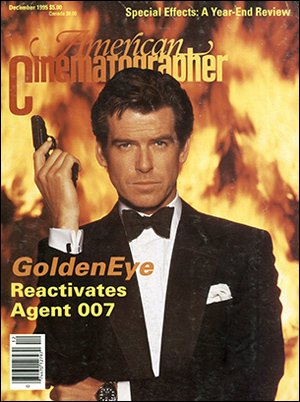 |
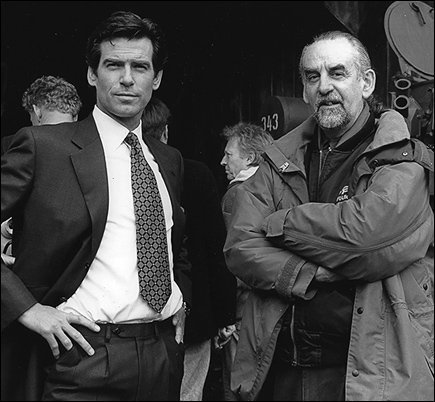 |
|
American
Cinematographer December 1995
GoldenEye
Director of photography
Phil Méheux, BSC |
|
New James Bond
Pierce Brosnan with GoldenEye Director of photography
Phil Méheux during filming of the tank chase at Leavesden
Studios. With Pinewood unavailable, the EON Productions
converted the old Rolls-Royce factory at Leavesden Aerodrome
into a working studio, and the facility (later re-branded
Leavesden Studios) became a major film-making centre. |
|
|
|
Paging 007 for The World is Not Enough
Cinematographer Adrian Biddle, BSC helps director Michael
Apted modernize James Bond. |
|
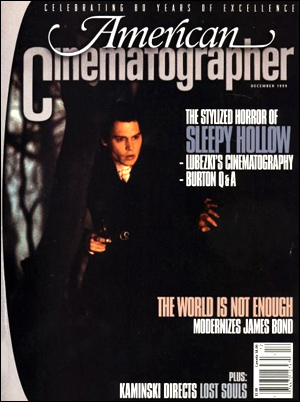 |
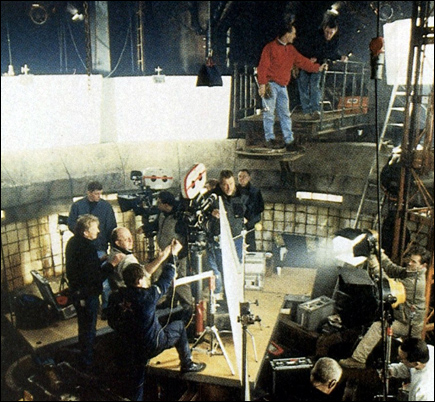 |
|
American Cinematographer December 1999
The World Is Not Enough
Director of photography
Adrian Biddle, BSC |
|
The World Is
Not Enough was filmed at Pinewood Studios, where the
production staged several major action sequences, including one
set at a refinery complex in Azerbaijan. |
|
|
|
No
Holds Barred:
Die Another Day
An army of filmmakers, led by director Lee Tamahori and
director of photography
David Tattersall, BSC, brings James Bond’s 20th adventure to the
screen. |
|
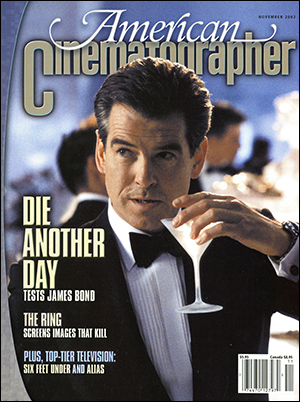 |
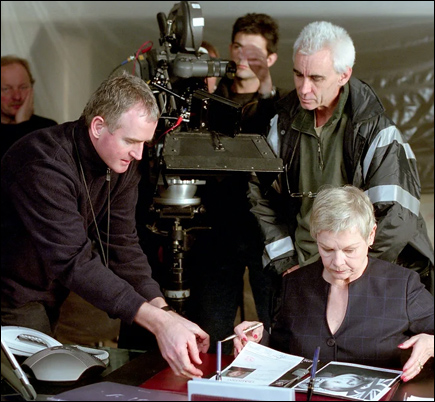 |
|
American
Cinematographer November 2002
Die Another Day
Director of photography
David Tattersall, BSC |
|
Die Another
Day (2002) Cinematographer David Tattersall (left), adjusts
a file folder for M (Judi Dench) as director Lee Tamahori
observes. |
|
|
|
Casino Royale: High Stakes For 007
Director Martin Campbell and cinematographer Phil Méheux, BSC
refashion
the James Bond franchise for a new generation of viewers. |
|
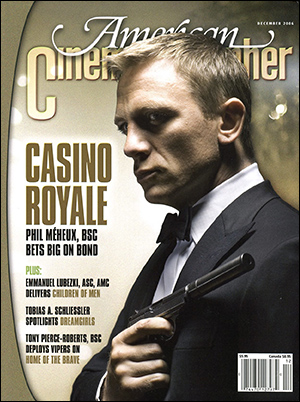 |
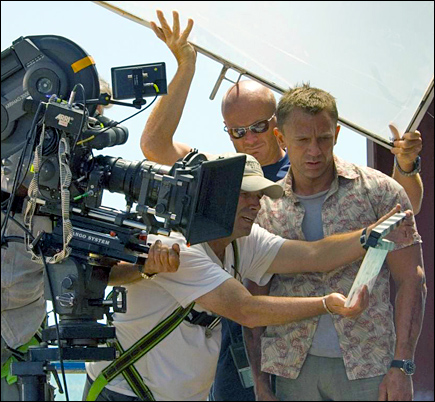 |
|
American
Cinematographer December 2006
Casino Royale
Director of photography
Phil Méheux, BSC |
|
The spectacular
free-running and crane fight sequence that opens Casino
Royale were filmed in The Bahamas standing in for
Madagascar. (L-R) Director Martin Campbell, Stunt co-ordinator
Gary Powell, and new James Bond Daniel Craig. |
|
|
|
Quantum of Solace:
Forging A New Bond
Roberto Schaefer, ASC and director Marc Forster continue their
filmmaking partnership with the 22nd James Bond feature. |
|
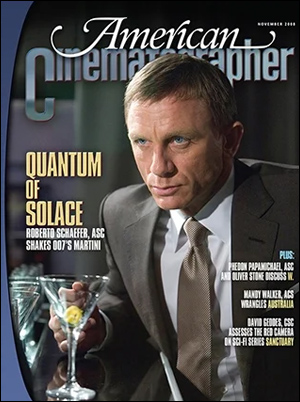 |
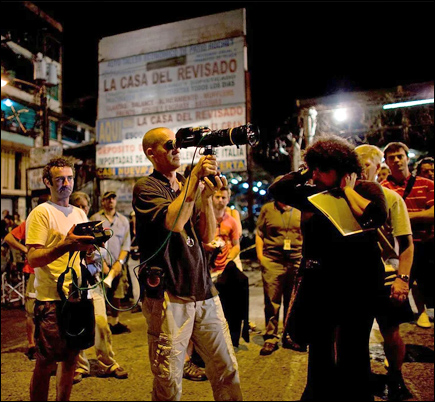 |
|
American
Cinematographer December 2006
Quantum of Solace
Director of photography
Roberto Schaefer, ASC, AIC |
|
Quantum of
Solace (2008) Director of photography Roberto Schaefer on
location in Panama City. |
|
|
|
Skyfall: MI6 Under Siege
Roger Deakins, ASC, BSC joins Her Majesty’s secret service with the
23rd James Bond adventure. |
|
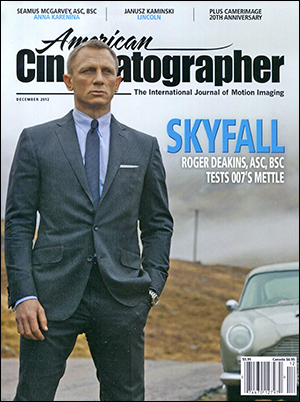 |
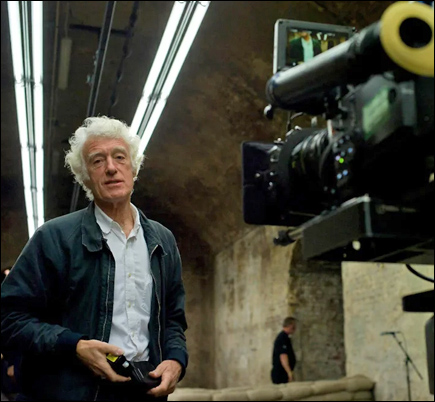 |
|
American
Cinematographer December 2012
Skyfall
Director of photography
Roger Deakins, ASC, BSC |
|
Skyfall
(2012) Director of photography Roger Deakins on location in the
Old Vic Tunnels in London. Skyfall was the first James
Bond film to be shot entirely digitally, and earned the
cinematographer an Academy Award nomination. |
|
|
|
Sinister Sect: Spectre
Hoyte van Hoytema, FSF, NSC combines classic and contemporary styles
for the latest James Bond film. |
|
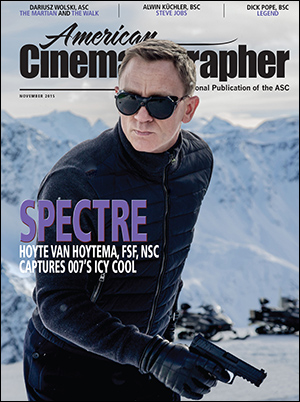 |
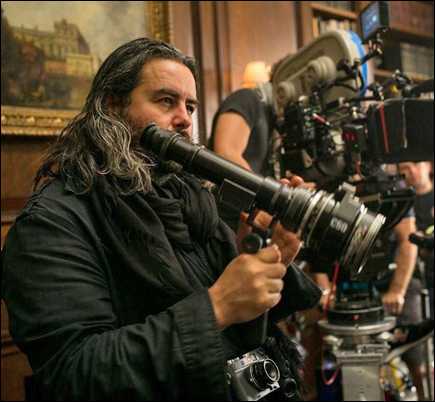 |
|
American
Cinematographer November 2015
Spectre
Director of photography
Hoyte van Hoytema, FSF, NSC |
|
Spectre
(2015) Director of photography Hoyte van Hoytema on M's office
set at Pinewood Studios. |
|
|
|
Rehired Gun: No Time to Die
Linus Sandgren, ASC, FSF shoots 007 for director Cary Joji Fukunaga. |
|
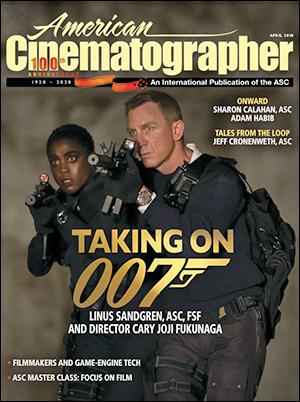 |
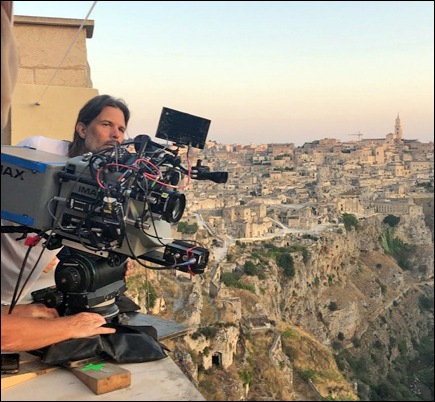 |
|
American
Cinematographer April 2020*
No Time To Die
Director of photography
Linus Sandgren, ASC, FSF |
|
No Time To
Die (2021) Director of
photography Linus Sandgren lines up a shot with an IMAX 65mm
camera in Matera, Italy. No Time To Die was the first
James Bond film to have several sections captured (about 40
minutes in total) in the IMAX format, including the opening
sequences in Norway and Matera, and scenes set in Cuba. |
|
|
|
*The article was
originally published in the April 2020 edition of American
Cinematographer at the time No Time To Die was originally
scheduled for release, but then postponed due to the Covid-19 pandemic.
No Time To Die was eventually released in the USA in October 2021. |
|